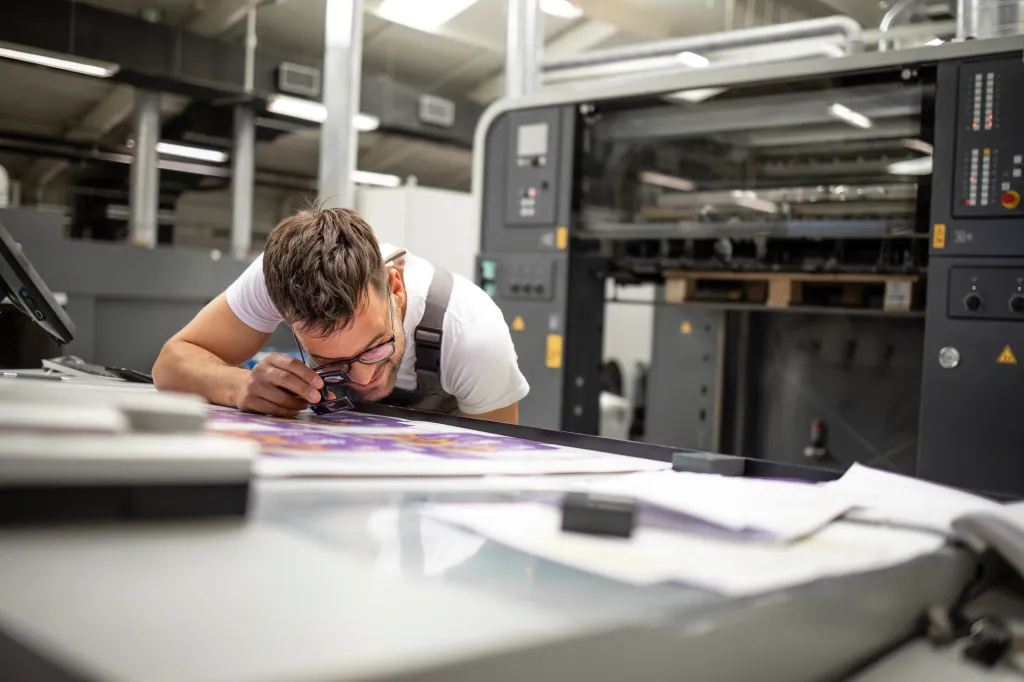Adam Pesce joined his family’s business, Reunion Coffee Roasters, in 2006 with climate and social impact in mind. But after overhauling the Toronto and Oakville-based coffee roaster’s approach to responsible sourcing and sustainable packaging, he was stumped by efforts to reduce the greenhouse gas (GHG) emissions of the business’s operations by switching to renewable energy sources, like solar, wind, or low-impact hydroelectricty.
“I remember being a very frustrated young professional whose goal was to make our business more environmentally sustainable,” says Pesce, president of the coffee roaster, which was founded by his father Peter in 1995. “The resources to figure it out were so limited.”
Today, Reunion Coffee is a certified Benefit (B) Corporation, and the coffee company has worked with farms and co-ops on development projects; supported certifiers that promote social, environmental, and financial development; and transitioned to 100% renewable energy supplied by Bullfrog Power to reduce its GHG emissions.
But nearly 20 years on, many businesses looking to decarbonize face the same challenge as Reunion Coffee: How do you start your business on the road to renewable energy?
Understanding the opportunities of decarbonization for your business
According to KPMG’s 2023 Private Enterprise Business survey, the majority (78 per cent) of small- and medium-sized businesses have established policies or programs to reduce the impact of their GHG emissions. However, seven in 10 say they lack the time and resources to prioritize it, pointing to a skills and expertise shortage and the complexity of decarbonizing their supply chains as top barriers.
It can be challenging to navigate. But with the rapidly evolving renewable energy market, it might be time for Canadian businesses to weigh their options and see how decarbonization could help their environmental sustainability goals.
The cost of renewables is going down globally—solar energy has declined 83% and wind energy has fallen 65% since 2009. Yet, only 8% of Canada’s electricity demand was met through wind and solar in 2023, according to data collected by the Canadian Renewable Energy Association (CanREA).
Phil McKay, senior director of distributed energy resources and grid integration at CanREA says many businesses are still caught in the energy transition’s early days.
“I think once people start to wrap their heads around (the idea of adopting renewable energy) and spend the time with it, then it starts to make sense for a lot of businesses,” he says. “But getting there could be a little bit difficult.”
From McKay’s perspective, the first step to decarbonization is understanding the benefits that could apply to your business.
“It’s going to be different for every business and (depend) on where you are in the country,” says McKay. “The options are wide and broad and can be tailored to what you want.”
He groups potential wins into two, often entwined, categories: Affordability, and environmental sustainability goals and leadership.
Affordability and cost-saving opportunities
Affordability comes into the conversation in a few different ways. McKay points to price hedging or future-proofing against the increasing cost of energy.
“Maybe the business is expanding so they want to build in solar and storage to meet that demand,” he says. There’s also electrification on the whole, such as transitioning from gas-powered heating systems to electrical, which in turn could reduce energy bills. McKay says CanREA has a breakdown of cost savings by province.
Climate resiliency is another consideration. According to Electricity Canada, almost half of the power outages in 2023 were weather-related.
“It can be pretty expensive to go without power for a business,” says McKay. “You can ride through some of those major events with batteries that are charging on the sun, rather than having to go and buy that gas for your generator (to protect) critical business operations.”
Read more: Finding the returns on energy-efficient commercial building retrofits
Sustainability goals and leadership opportunities
Recent survey data from Enterprise Ireland shows 84% of Canadian business leaders agree that ESG principles are an important part of their corporate policy. And yet, nearly three-quarters of employers admit it’s a challenge to put these mandates into action.
Decarbonization can be an impactful sustainability goal. “(It) really resonates with a lot of people these days,” says McKay. “(Businesses can) show how much clean energy went into their product, whatever that is.”
For Pesce and Reunion Coffee, cost savings, efficiency and sustainability leadership go hand-in-hand.
“We spend per kilowatt-hour, so we also want to be thinking about things in terms of efficiency as well,” he says. “On an ongoing basis—as we grow, change, get new equipment, update equipment, do our maintenance work—we’re thinking about how we can reduce our energy consumption per pound of coffee roasted.”
Once you’ve figured out your business’s drivers for change, then it’s time to move on to the how.
Use your business’ energy data to find inefficiencies
Ryan Zizzo, founder and CEO of Mantle Developments, a climate consultancy focused on the built environment, says there’s a wealth of data in your energy bills.
“Before doing anything with external consultants or hiring anyone, the first thing I always tell people is just to look at your energy data,” says Zizzo. “You’d be surprised how patterns will come out.”
He recommends collecting all your energy bills, including gas and electricity, and putting them in a spreadsheet to see your usage over time and how it changes.
“What does your energy look like in January versus September or June? Look at how your energy varies over time—maybe in the winter you’re using four times as much energy because you have inefficient windows.” says Zizzo.
Audit your business’s building envelope
Next up is an energy audit to comprehensively look at the systems your business is using and the building envelope (the exterior walls, foundation, roof, windows and doors) to assess your energy consumption.
According to the Business Development Bank of Canada (BDC), audits typically range from a Level 1 walk-through assessment to a Level 3, which includes detailed technical engineering information. Prices vary, but Level 1 and Level 2 range from one to 10 cents per square foot.
The audit can be worthwhile from a cost perspective, with the BDC pointing out that most buildings can save 15% by incorporating low- or no-cost measures.
“There’s a whole series of things that these energy audits would recommend, and then basically it’s up to the owner to decide which ones they want to invest in,” says Zizzo.
Make informed decisions based on your unique situation
In the case of Reunion Coffee, Pesce realized early on that, structurally, putting wind turbines or solar panels on the roof of the roasting facility in Oakville could be costly. To decarbonize the business, he needed to make cost effective, efficient, and most of all, simple investments.
“At the time, especially with solar being so expensive, it would’ve required a bunch of engineering work to (handle) the weight,” says Pesce. “Wind turbines wouldn’t have worked because we don’t have space for them.”
Reunion Coffee’s roasting facility is 50,000 feet and filled with equipment that runs on three-phase electricity, a heavy-duty version of what is used in homes. “We soak up a lot of energy,” he says. “So (solar) battery capacity would’ve been a problem as well.”
While Zizzo points out that anything moving you toward electrification can help to reduce the GHG emissions from your building’s energy use—“Installing a heat pump is probably the most effective thing that you can do (to help your business use) less gas.”—100% electrification may not be feasible for every business, especially when it comes to powering machinery.
“We use a lot of natural gas because it’s the fuel for the coffee roasters,” Pesce says. Reunion Coffee is currently working with an environmental engineer to develop a way to capture the heat from the roasting process to warm the coffee in advance and reduce energy usage.
Access funding to assist your business’s energy transition
Recent data from Statistics Canada found that one in three businesses cite a lack of financial resources as a top barrier to adopting green practices in the near future.
However, CanREA’s McKay says there are incentives to support decarbonization efforts:
Federal incentives
“I think one of the biggest boons for businesses looking to invest in this stuff is the investment tax credits (ITCs) offered by the federal government,” says McKay. The Clean Technology ITC is a refundable tax credit of up to 30% of the capital invested in adopting technology such as heat pumps, clean electricity generation, such as wind turbines and solar or stationary electrical energy storage. A tax advisor will be able to provide your business with more guidance on applying for an ITC.
Provincial incentives
“You do need to look up what’s available locally,” cautions McKay.
In Ontario, Pesce says he leveraged the Independent Electricity System Operator’s (IESO) Save on Energy program to make upgrades at no cost.
“We put LED lighting throughout the building, which really is a nice decrease in our energy consumption,” he says.
Other options for funding decarbonization efforts include programs like the Property Assessed Clean Energy program (PACE), which is available in a number of provinces across the country.
Natural Resources Canada has an inventory of programs designed to help businesses become more energy efficient or switch to alternative energy sources. The directory includes programs offered by federal, provincial or territorial governments, municipalities, and major electric and gas companies.
Purchase Power Agreements
There are also Power Purchase Agreements, where an installer and customer enter into an agreement to install solar panels on the business at little to no upfront cost. The installer then sells the power to the customer at a fixed rate for a period ranging from 10 to 25 years. After that, the customer can buy the system or have it removed.
Ultimately, Bullfrog Power fit the needs of Reunion Coffee.
“What it came down to is I don’t want to have to be a solar power expert and I don’t want to have a solar power expert on staff… that’s not what we do, we’re a coffee roasting business,” says Pesce. “For me, it was about finding that partner that could make renewables work for a business like ours that’s energy intensive and big enough that it’s hard to do on your own—we did the thing that was the most reasonable and functional for us.”
The impact of incremental change
For Reunion, Pesce says decarbonization is often viewed as this big idea, but it’s incremental in nature, especially when it comes to consumption.
“I’m a firm believer that a lot of small things can make a difference,” he says. “There are policies and procedures (to reduce) our phantom energy usage, like turning off power bars at the end of the night and on the weekends, shutting down computers, don’t just leave everything on…being more thoughtful about the way that we’re working daily.”






